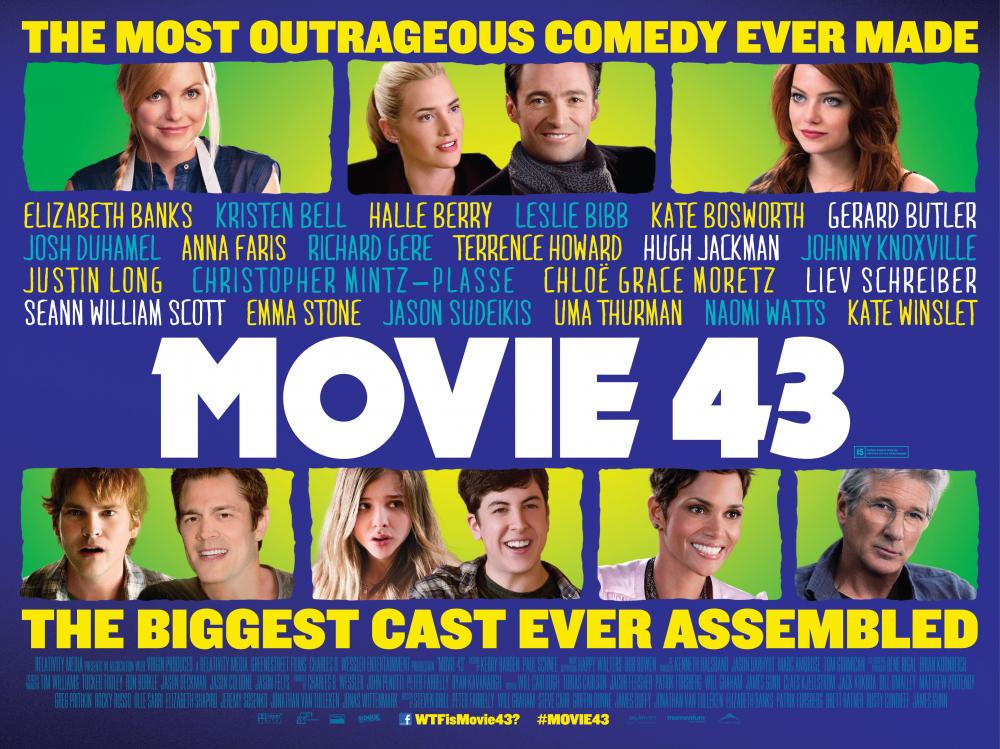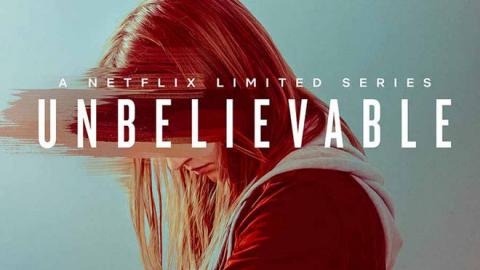Making of "Movie 43," A Star Studded Disaster
Share with friends

How did such a universally disliked project attract (and retain) so many A-list celebrities – and pay them scale?
What if I told you that there’s a movie starring Kate Winslet, Hugh Jackman, Emma Stone, Halle Berry, Uma Thurman, Terrence Howard, Chris Pratt, Elizabeth Banks, Johnny Knoxville, Dennis Quaid, Common, Seth McFarlane, and Richard Gere? What if I told you that a guest reviewer on Roger Ebert’s blog deemed this film, “The Citizen Kane of bad movies?”
Such a movie exists. If its 4% rating on Rotten Tomatoes doesn't scare you away, you can rent it on Amazon for $3.99.
The cast has a combined fourteen Oscar nominations (Jackman actually won a Golden Globe for Les Miserables the year of Movie 43’s release) and twenty-two named talent actors with star billing, yet many of the work’s most famous thespians were paid “just $800 for two days' work." How, exactly, did such a universally disliked project attract (and retain) so many A-list celebrities – and pay them scale?
PUTTING IT ALL TOGETHER
Charlie Wessler, a longtime producing partner of Peter Farrelly, intended Movie 43 to be a, “’Kentucky Fried Movie’ of the modern age.”
It was a concept that many studios deemed untouchable and the idea that the film would attract A-list talent seemed laughable. It was rumored that George Clooney, one of the first stars approached to act in the work, responded with an emphatic, “F--- off." Several directors – including Matt Stone, Trey Parker and the Zucker Brothers (of Kentucky Fried Movie) – at some point signed on, but bailed before filming began.
Casting began when Wessler met Jackman and Winslet through friends a dozen years ago, and was inexplicably able to sign the two of them to perform in a single sketch. This sketch was then filmed, produced, and used to convince other actors to join the project. If Hugh Jackman and Kate Winslet thought Movie 43 was redeemable, then could it really be that bad?
The answer was much worse than many had expected. Reports came out that several stars had agreed to a part in the film without reading a script, and several actually attempted to leave the project when they realized what they’d signed up for. Unfortunately for those that prematurely agreed to the film, Farrelly didn’t let anyone break the terms of the contract they had signed with him. Peter Farrelly described the process of making the movie as, “Wait for [the actors]. Shoot them when they want to shoot. Guilt them to death."
RELEASE AND MARKETING
Following casting and editing, the film, as we now know, was given a full theatrical release. Any successful product launch is dependent upon marketing, and the title of a movie is perhaps its most important marketing decision. Movie 43 is entirely meaningless, simply a phrase Farrelly overhead his son saying with his friends. It neither helps sell the film nor tie any of its unrelated sketches together.
Evidenced by its January release date, Movie 43 was dead before hitting theaters. There was very little promotion and advertising leading up to its release, and advance screenings weren’t released to critics. There was intentionally no hype (aside from trailers) preceding the film’s theatrical debut. There was little to no intent to put butts in seats, and with a budget of only $6 million, there was never really any need. It made $32.4 million at the B.O. relying only on its actors' names alone.
THE WORK ITSELF
Upon release, Peter Farrelly “stated himself that the flick will probably get 13% on rottentomatoes.com and tank at the box office, but will become a huge cult classic in college dorm rooms everywhere.“ Somewhere along the way, those involved decided that instead of making a Kentucky Fried Movie, they were going to make something uniquely bad. And Movie 43 is not bad in the way that, for example, a Rob Schneider movie is bad. The work, which was given the tagline, “you cannot unsee it,” is so intentionally overwhelming in its use of gross-out comedy and offensive one-liners that it transcends the revolt against political correctness.
Having seen and shared the film in my adolescent years, I must admit that Farrelly was onto something when assessing the value of the work. Although, as a wannabe scriptwriter, it is incredibly difficult to admit it, I laughed – hard – at this movie and many of my friends laughed right along with me. That is not to say I think that this film is good, or that it deserves anything more than its fate. Yet that fate has always been intended. It is no more, and no less, than it set out to be. It is a self-aware celebration of its own inadequacies. Knowing the work was destined for complaints by censors and critics alike, Peter Farrelly created a self-indulgent celebration of bad taste, and released it to the public simply because he could.




